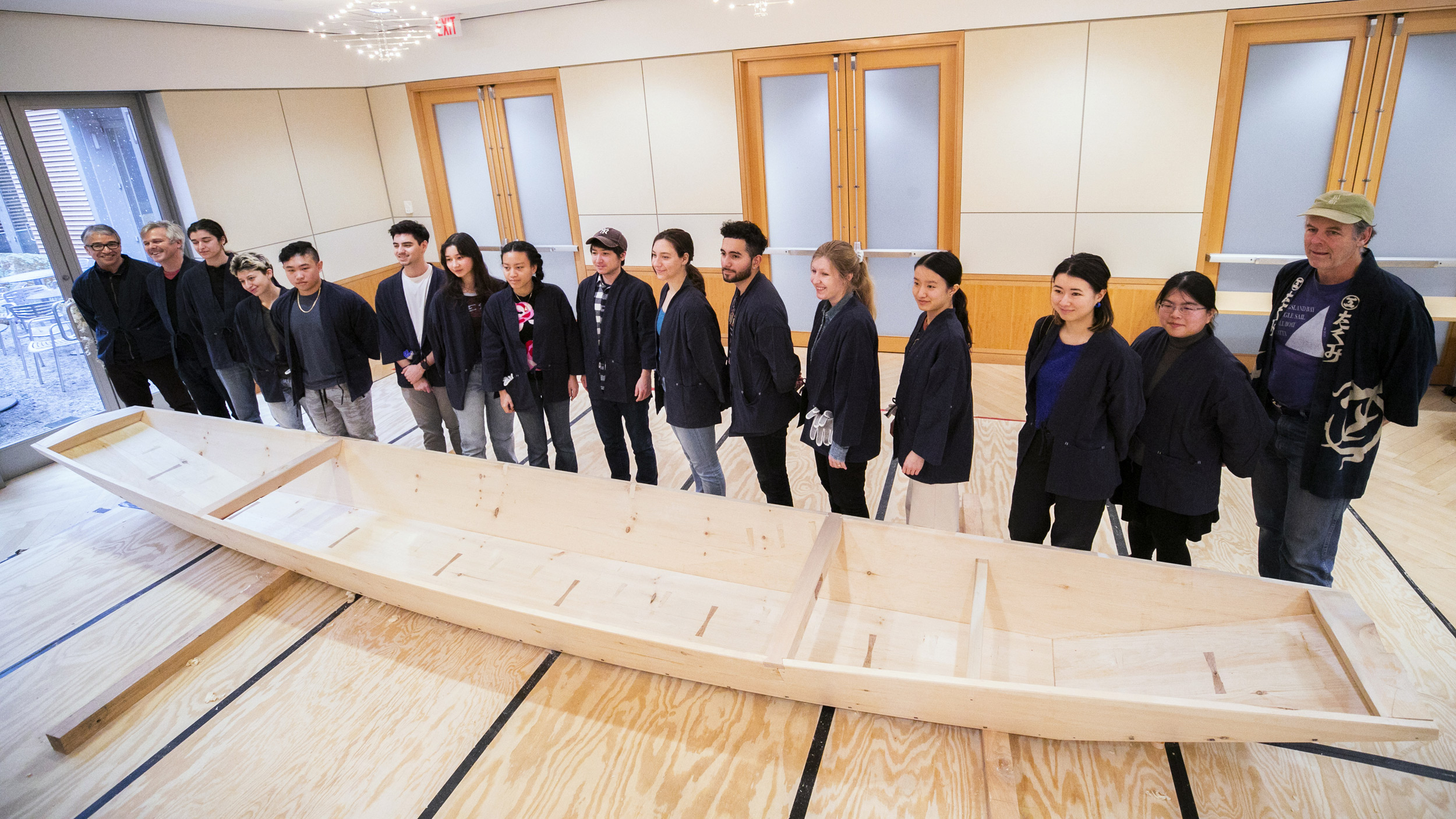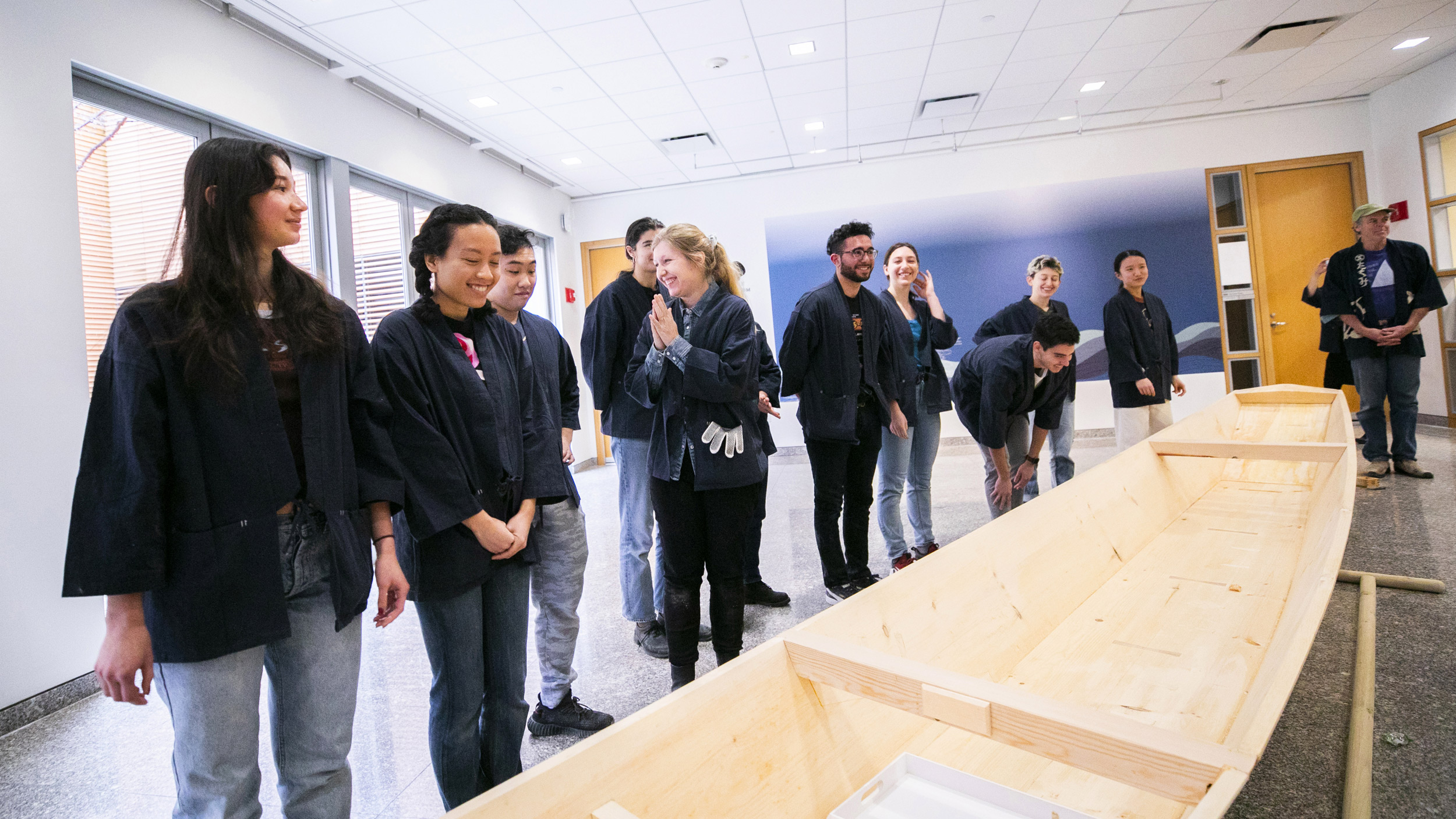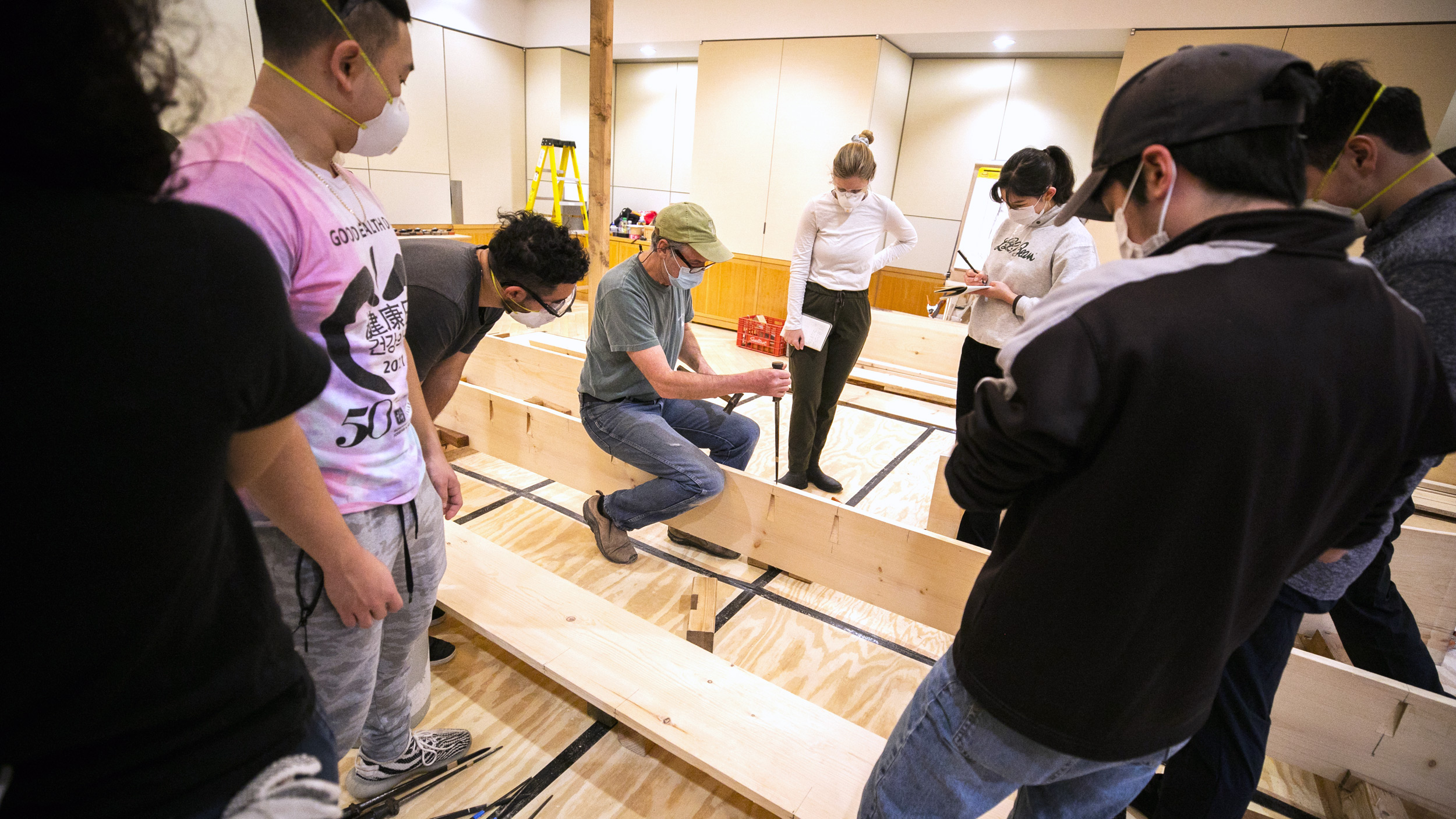
Students gather around instructor Douglas Brooks as they build a Japanese river skiff.
Photos by Stephanie Mitchell/Harvard Staff Photographer
First lesson in Japanese boatbuilding: Don’t speak.
Students make 22-foot skiff in ‘silent’ workshop that puts emphasis on observation — and a good hammering rhythm
Over two weeks last month, the staccato sound of hammers striking steel echoed across the concourse of the CGIS South Building. The percussion was not accompanied by a lot of lecturing, questioning, or chitchat, although it came from a classroom.
A dozen students, many with little to no woodworking skills, were building a 22-foot Japanese boat (wasen) using traditional techniques and tools in a Wintersession workshop tied to the Reischauer Institute’s 50th anniversary celebration. It was led by Douglas Brooks, a longtime professional boatbuilder who has spent decades apprenticing in Japan.
“It is about trying to achieve a silent workshop, and teaching without teaching, or teaching with as few words as possible,” said Brooks. “Students learn they have to pay attention, they have to watch carefully, because that’s the way they learn.”
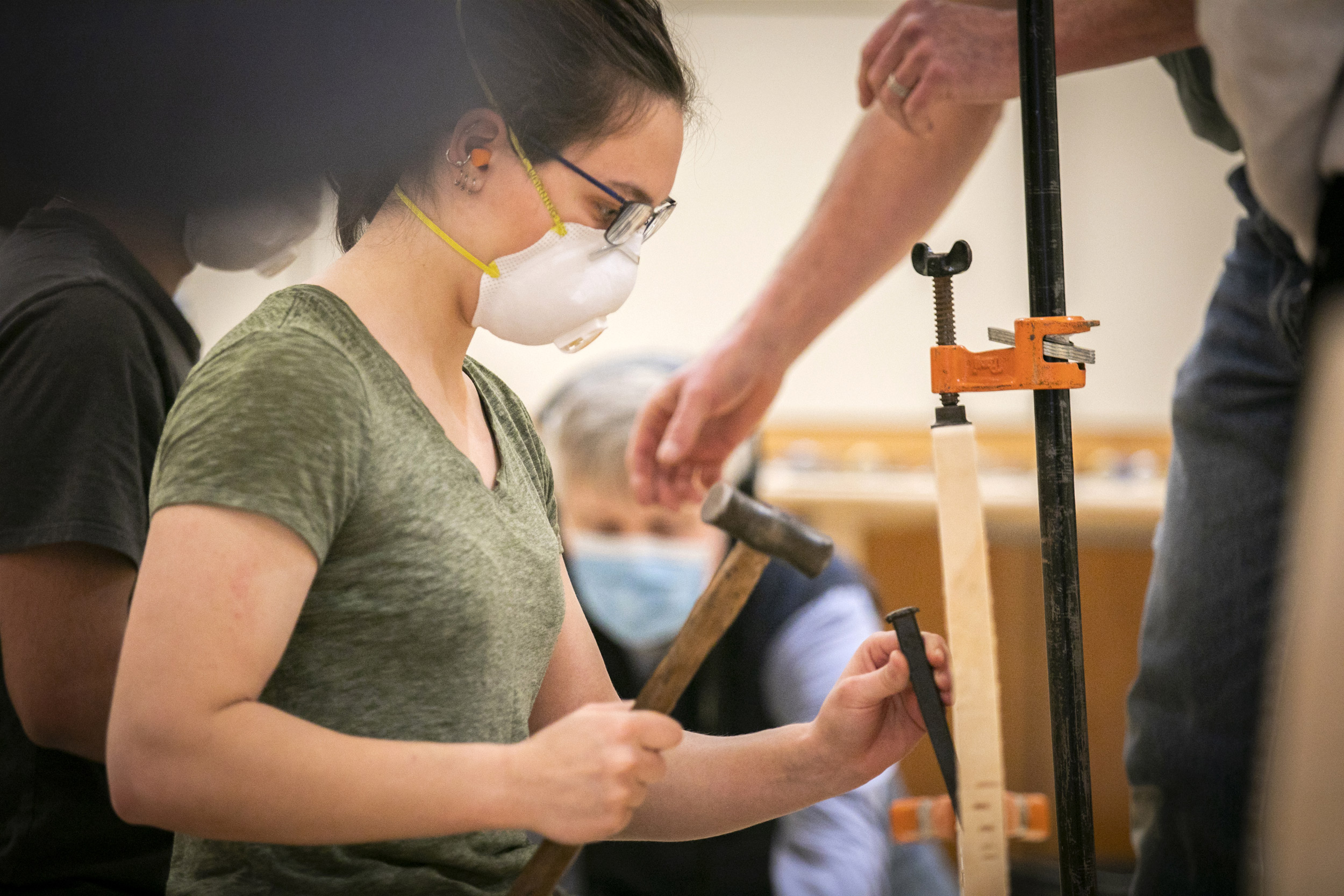

Brooks recently participated in a Reischauer Institute talk on apprenticeship style learning as part of the project. “Craft knowledge certainly is a form of intelligence that can be as important as anything that generates knowledge in the humanities and the sciences, in the social sciences,” said Yukio Lippit, Jeffrey T. Chambers and Andrea Okamura Professor of History of Art and Architecture, during the session. “It involves forms of bodily memory and decision making that are uniquely corporeal and nonverbal and silently transmitted in craft traditions so easily overlooked.”
In addition to careful observation, Brooks encourages students to develop their own unique hammering rhythm, a slow and careful drive of a slightly bent nail into a plank.
The percussive hammering method “has a very evocative name,” said Brooks. “It is called uguisu no tani watari, which means ‘the bush warbler flits back and forth across the valley.’ There’s a great risk of splitting the plank. It’s a really frightening way to drive a nail into a plank … It injects a kind of playfulness into the workshop.”
Brooks describes a feature that sets apart Japanese boatbuilding: edge nailing. In the West, “we tend to send the plank of the fastening through the planking into a frame or rib. There are no frames or ribs in Japanese boats. We’re ‘edge nailing’ the skin of the boat to itself.”
Reischauer Institute Director Mary Brinton noted that many educational experiences had been suspended or carried out remotely during the pandemic. “The wasen workshop celebrates being able to once again come together in-person to learn.”
The workshop “encapsulated the many facets of an international center,” added the Institute’s Executive Director Gavin Whitelaw, and created a symbol – of an institute afloat for 50 years.
Through the end of March, the exhibition “In the Making: Wasen and Lessons in Japanese Wooden Boatbuilding” showcases the students’ efforts through timelapse footage, photographs, audio samplings, and the 22-foot boat in the Japan Friends of Harvard Concourse Gallery. In early April, the boat will be launched on the Charles River.
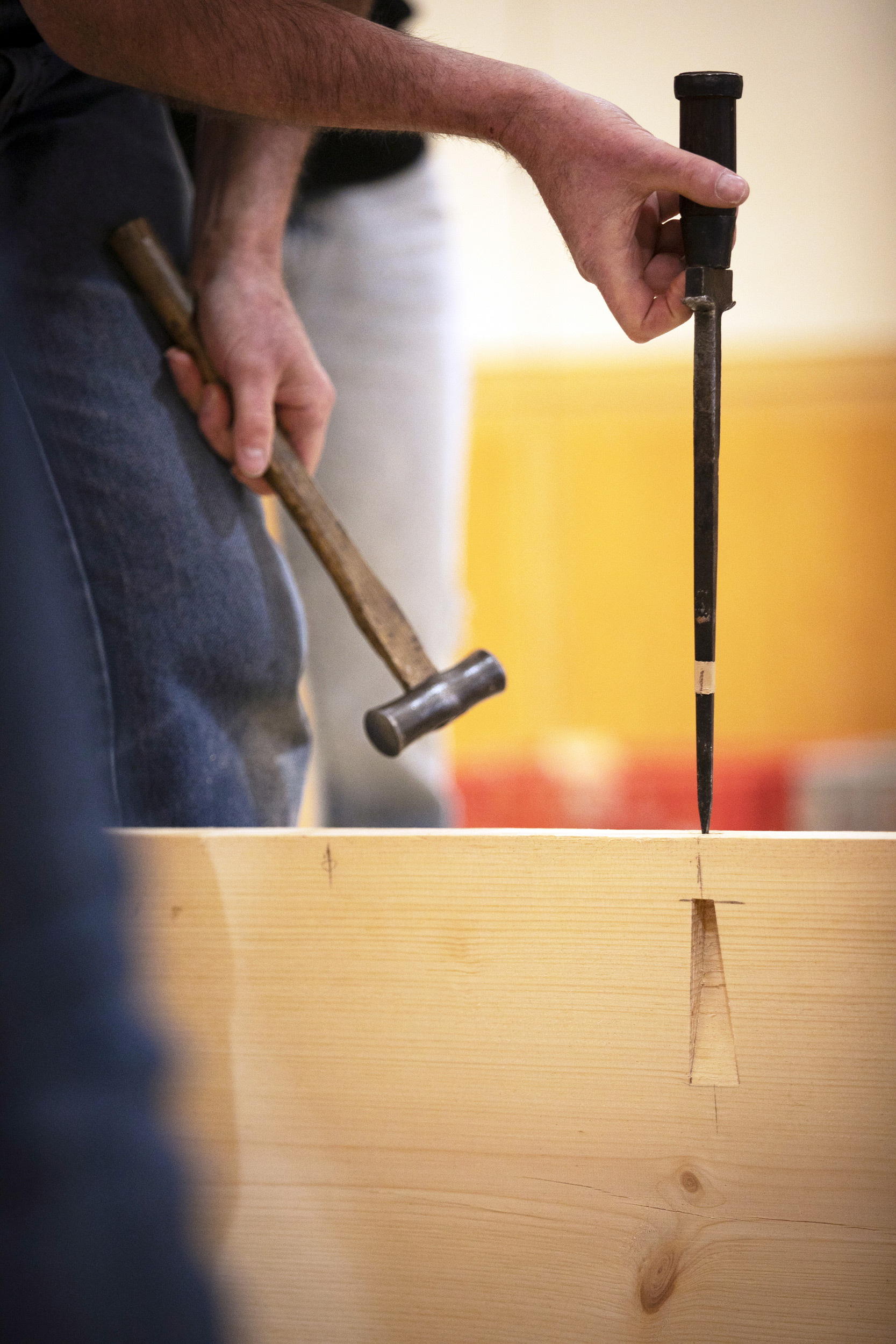
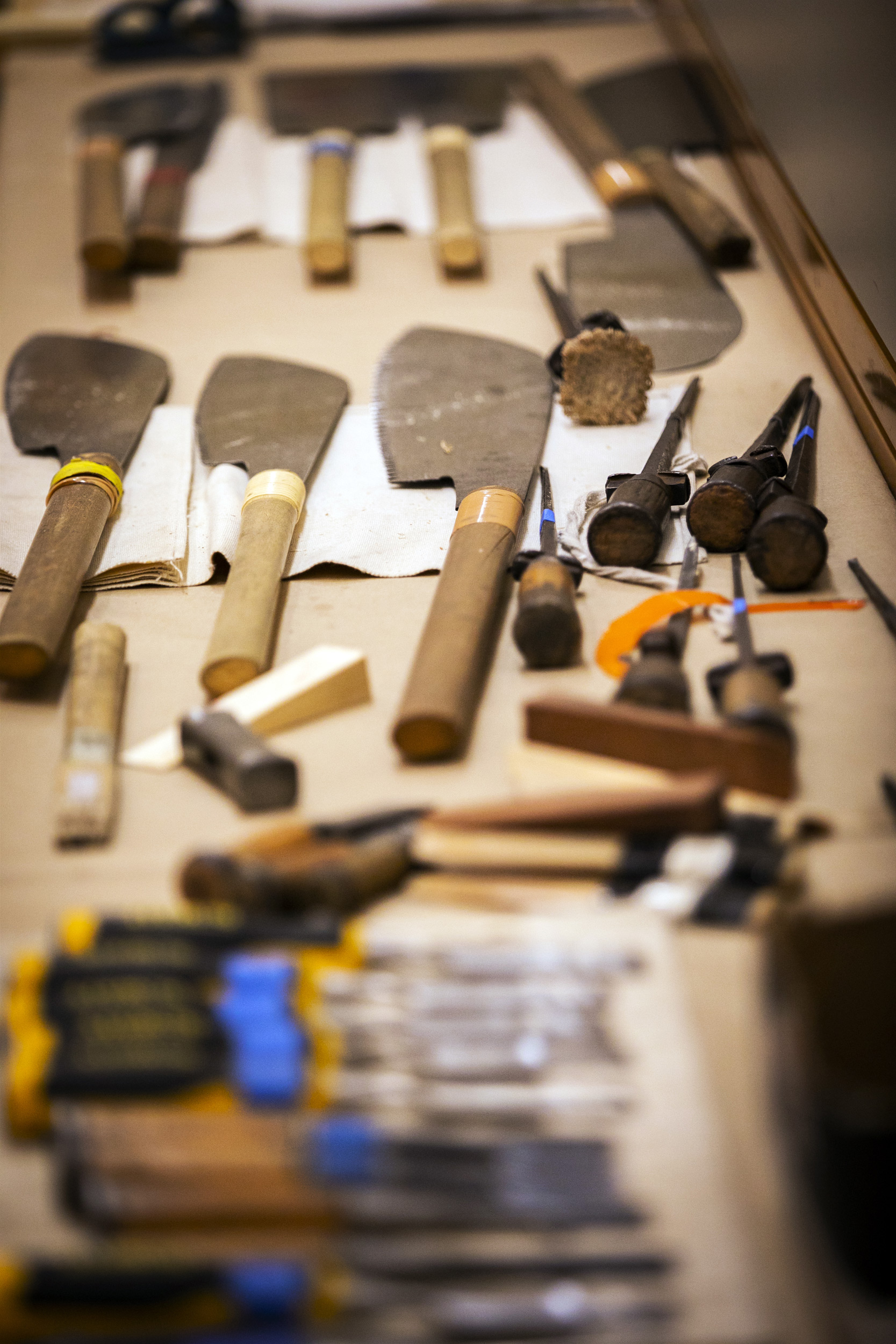
Brooks demonstrates a technique. Tools of the trade are at the ready.
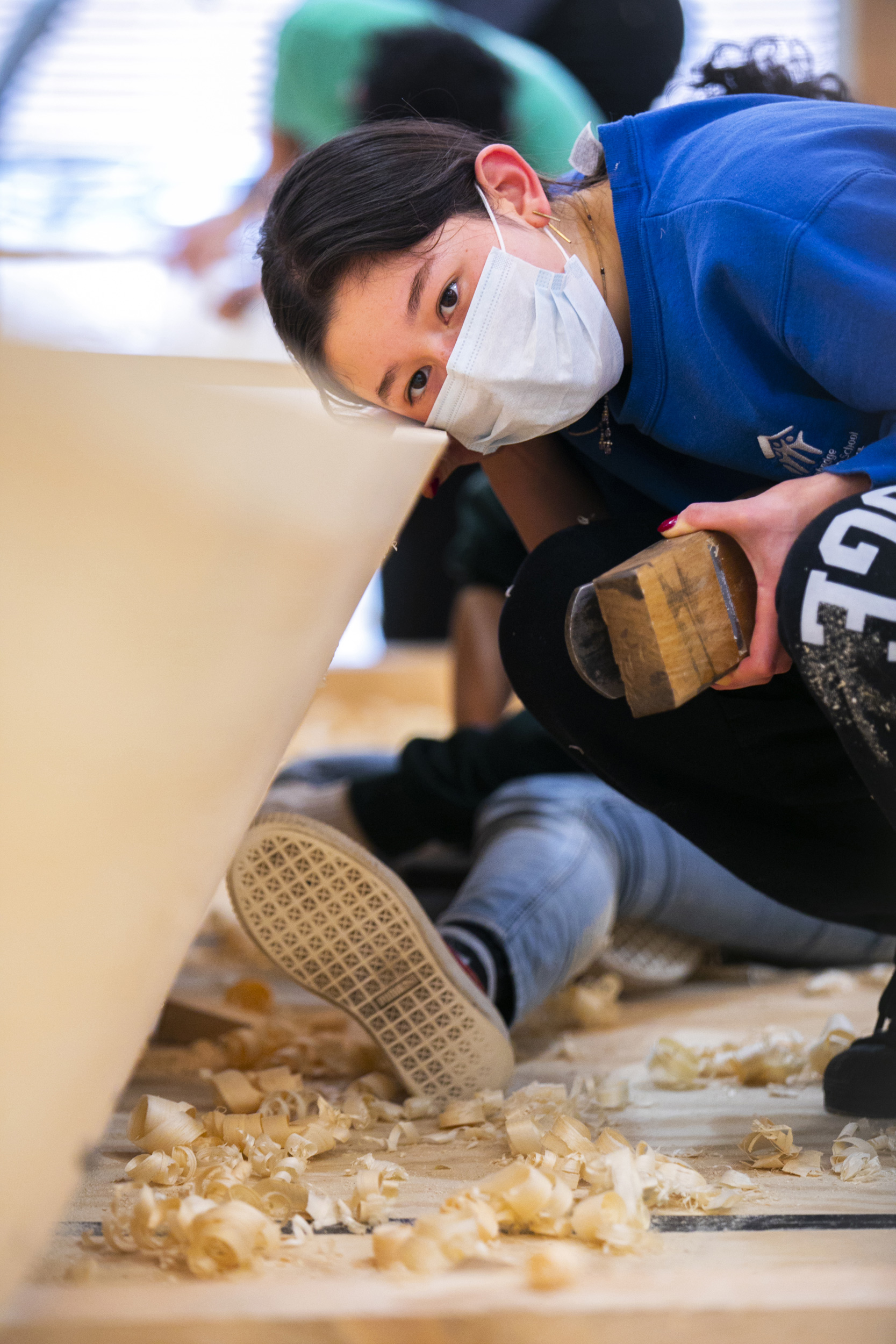
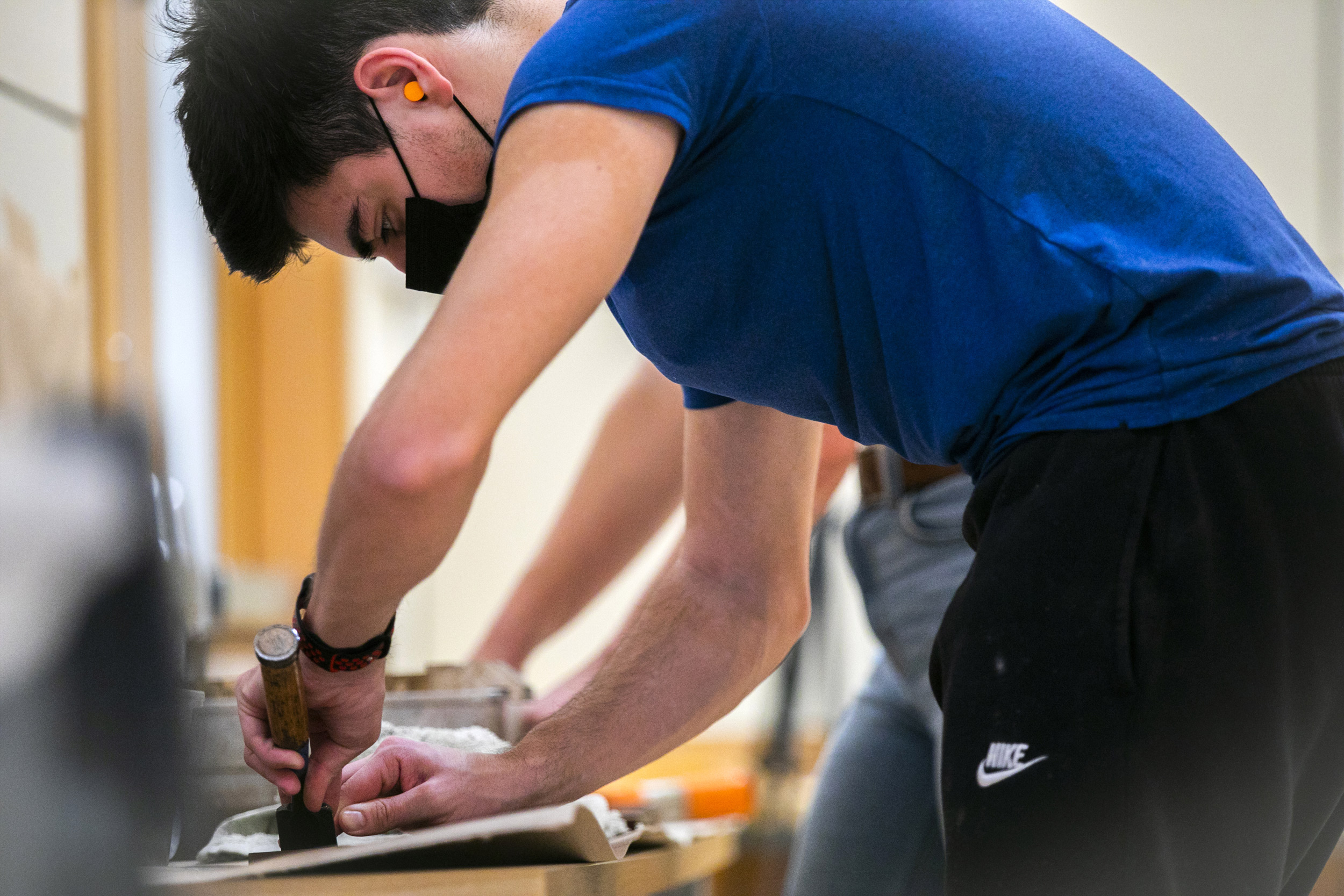
Sachi Kirby ’26 and Carlo Hensch ’24 become absorbed in their work. Kirby uses a plane to make the boat edge straight.

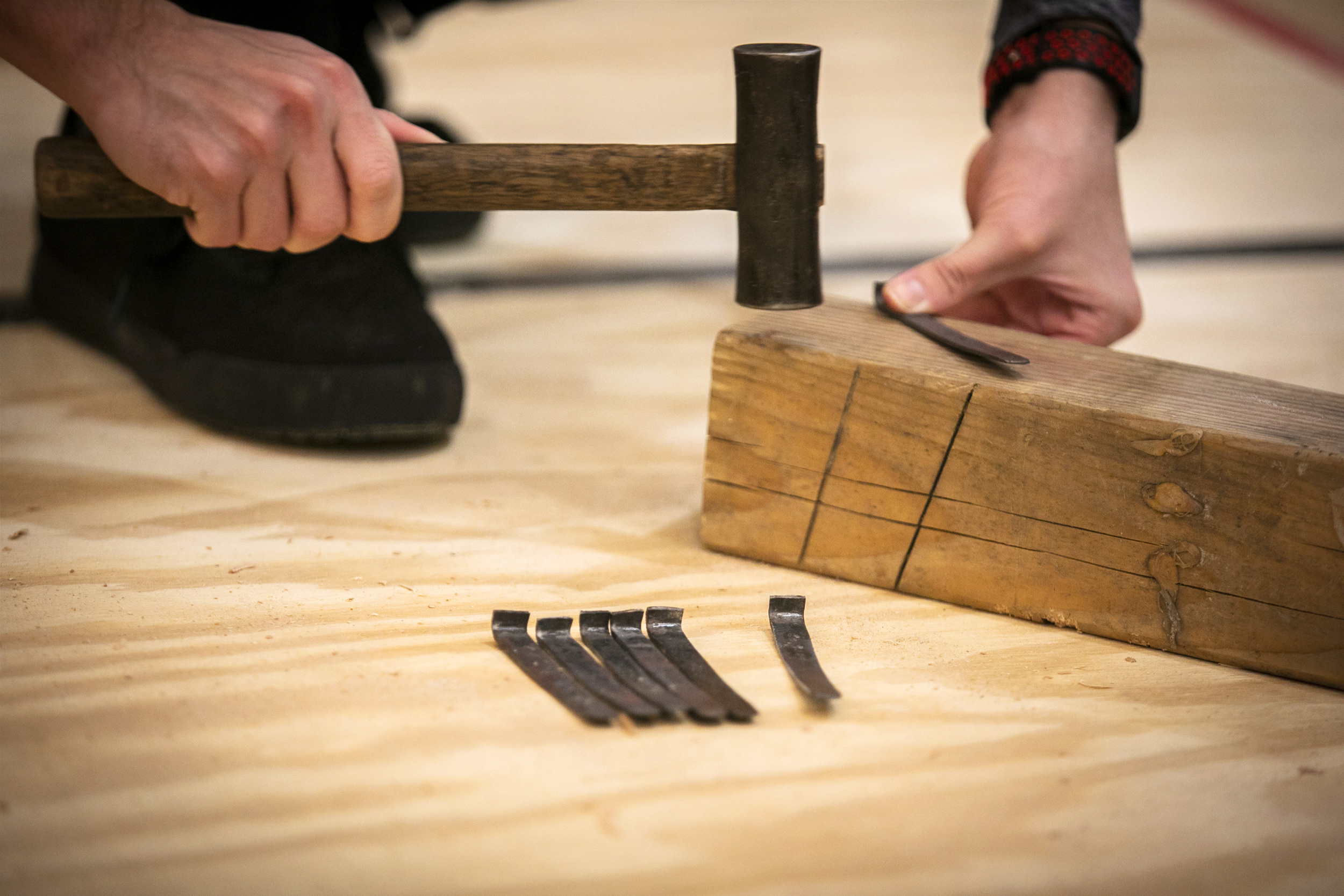
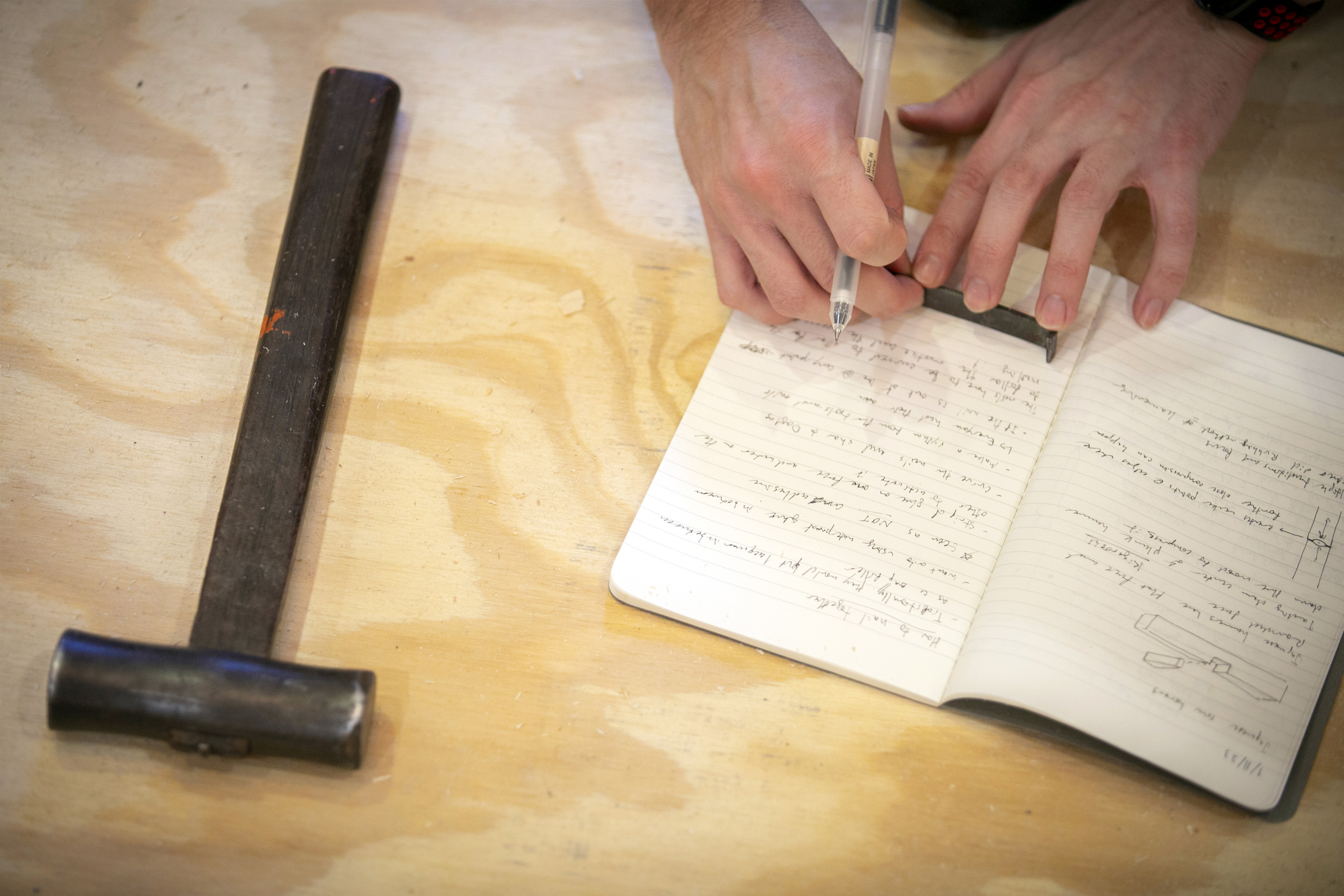
Hensch hammers a slight bend into a flat steel nail handcrafted by a blacksmith, and then marks the shape in his journal as a record of the correct form. The nail will be used to “edge nail” the skin of the boat to itself.
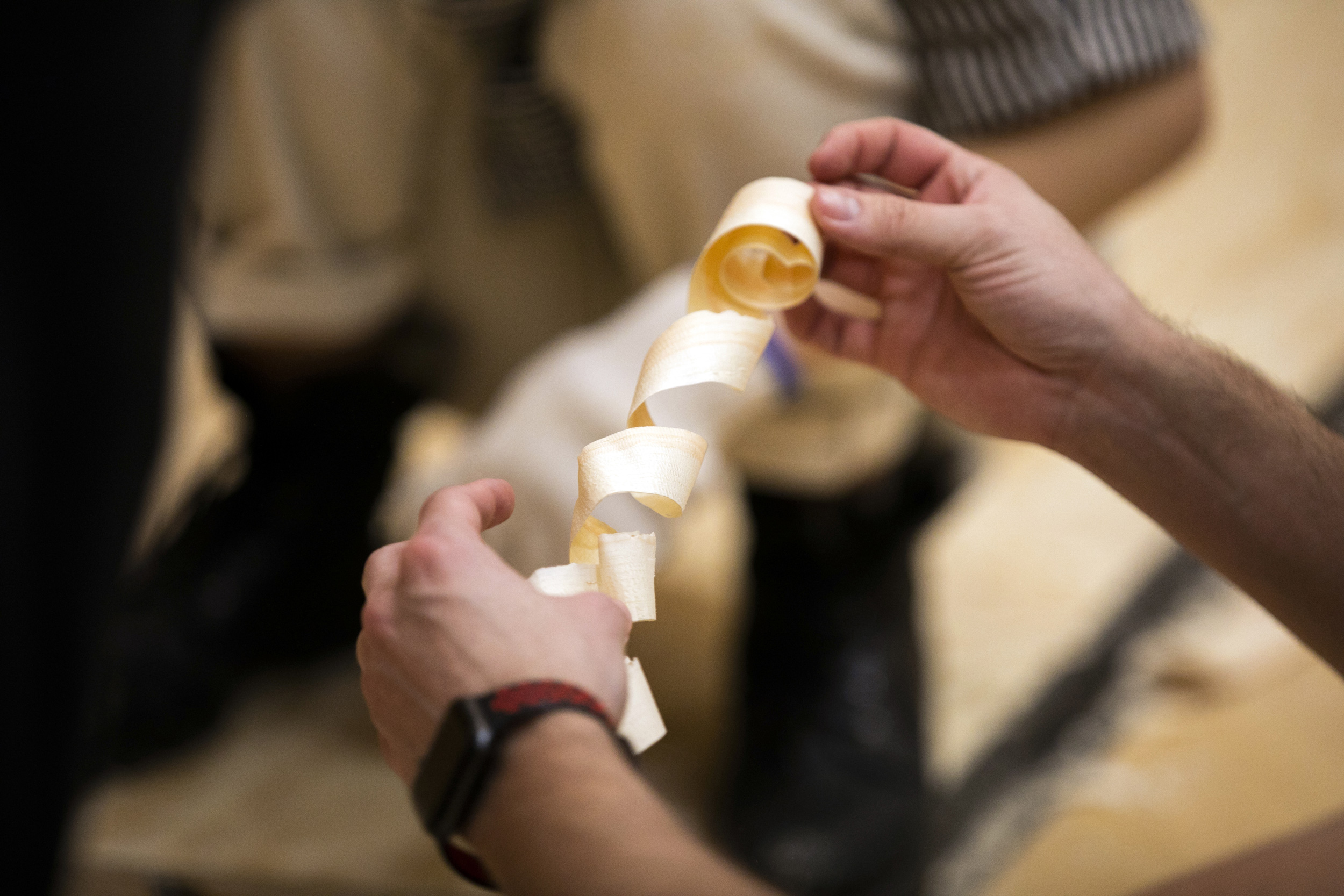
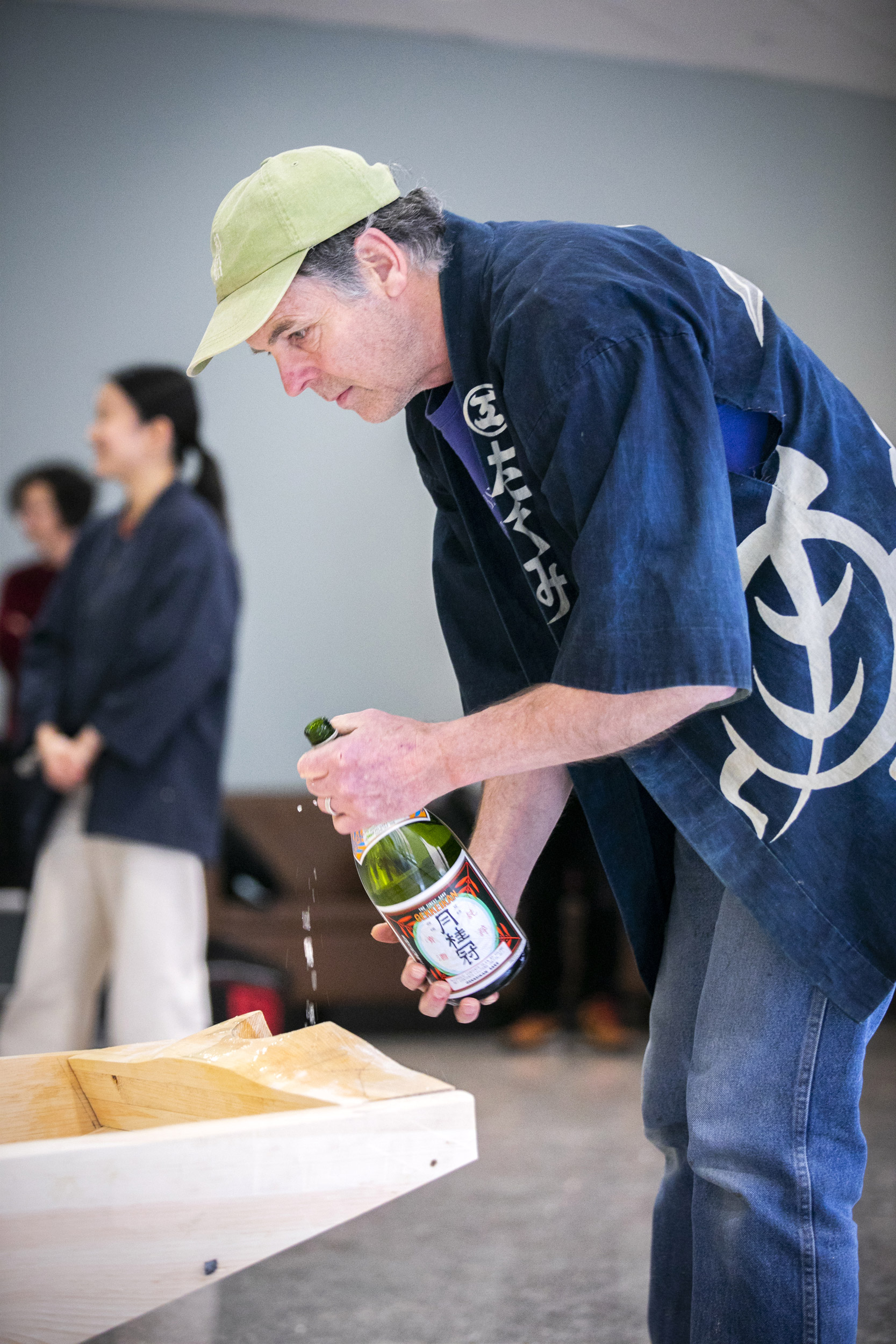

Brooks pours sake on the boat during the ritual ceremony at the end of the build. Gavin Whitelaw, the executive director of the Reischauer Institute, joins the students.
